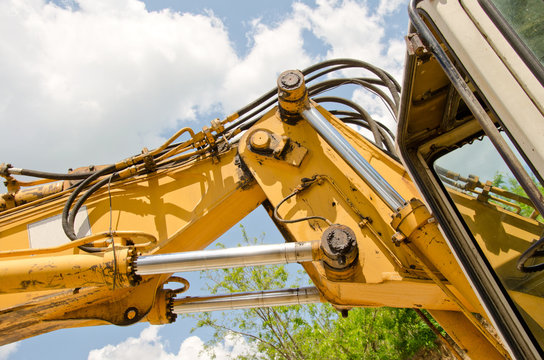What are hydraulic systems and how do they function?
Posted on September 26th, 2022
If you are a first-timer, do note that hydraulic systems have many uses in large and small industrial settings. Moreover, they are also available in structures, machinery, and automobiles. Simply put, the leading industries involving hydraulic equipment are paper mills, logging, manufacturing, robotics, and steel processing.
Per most experts, hydraulic system-based machinery proudly presents itself as difficult to beat as an effective and economical means of generating movement or repetition. It is essentially due to these factors it’s likely that your business uses hydraulics in one or more applications.
Hydraulic System- Explained
Diving deep into the concept, it’s necessary to mention that a hydraulic system uses pressurised fluid to carry out various tasks. Although all hydraulic systems operate on the same principle, each function may differ.
The pressurised fluid in hydraulic systems produces significant power that greatly benefits heavy machinery. This is because the pressure you apply to the fluid in a hydraulic system transmits unchanged. Simply put, the fuel that generates power can affect every vessel component. Therefore, you can use that fuel to carry heavy loads or complete repetitive tasks.
A cheap and effective method of generating movement and repetition is using hydraulic hoses and fittings. The system is, therefore, the most effective way to carry out this kind of work. Moreover, they work straightforwardly and are also dynamic.
The hydraulic system’s fundamental principle is straightforward and essentially constant. In this system, you will use the fluid to transmit the force from one point to the other. Oil is the primary fluid you could use in the procedure, and the energy you involve will multiply.
Hydraulic System Components
The hydraulic system’s smooth and efficient operation depends on various parts. Hydraulic pumps, control valves, reservoirs, actuators, accumulators, hydraulic fluid, filters, tubes, pipes, and hoses are some of the typical hydraulic system’s main parts.
- Hydrostatic Circuits
To put it simply, a hydraulic circuit is a system that transports liquid and allows for both pressure and direction control of the flow. The circuits achieve this using a network of coupled discrete components. A hydraulic circuit uses discrete and linear elements to operate similarly to an electric circuit. When processing chemicals, professionals and engineers frequently use hydraulic circuits.
- Hydraulic Pumps
You can use a hydraulic pump’s flow and pressure to transform mechanical energy into hydraulic energy effectively. Ideally, it would be best if you created a vacuum at the pump’s inlet to force the liquid into an inlet line and the pump. This will cause the liquid into the hydraulic system as mechanical action propels it to the pump outlet.
- Hydraulic Engines
A hydraulic motor converts hydraulic pressure and flow into torque and then rotation. You can also choose to consider it as a mechanical actuator for the sake of better understanding. They have numerous applications. A hydraulic drive system may include hydraulic motors, cylinders, pumps, and motor pumps.
You can use them to build hydraulic transmissions when coupling them with hydraulic pumps. While some hydraulic motors generate energy from water, most modern business operations—like yours—derive power from the hydraulic fluid.
- Hydraulic Cylinders
A hydraulic cylinder is a device that uses a force to move in a straight line by converting hydraulic fluid’s stored energy into power. It can also be single- or double-acting and has many applications. First, the cylinders start the pressure of the fluid, which has the entire hydraulic system behind its wheels. Then, a hydraulic motor controls the flow of the liquid.
- Filters
There’s no better way to describe filters than that they are a crucial component of the hydraulic system. This is because they remove undesirable particles from the fluid. Also, remember that mechanical components typically produce metal dust, which you must draw in addition to dirt.
Final Thoughts
Hydraulic systems have proven to be extremely useful in today’s world of heavy machinery, digital appliances, and electronics. This system, which multiplies small power many times, has assisted in lowering human effort and physical labour and saving time.
Working knowledge of hydraulics, such as the kind the experts have discussed in this article, will help you better understand a modern workplace and increase efficiency, productivity, and safety. You can learn more about hydraulics by going to Hydrofitme online.

